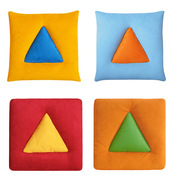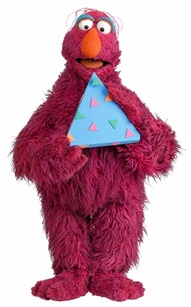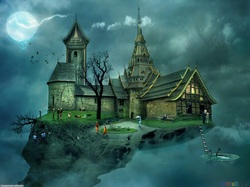Visualization Exercises
Visualizations appear in many forms in many
disciplines, and are recognized as highly useful tools that can be used towards
many outcomes. The temptation is to go too far too fast – small steps help in
developing this relatively difficult skill.
This skill requires that you develop your ‘third-eye’. This is essentially the platform upon which you ‘see’ things in your mind. Think of a gigantic soap bubble... or a tiny sea-horse. When you formulate the visual representation of these objects, it is done on this platform. The ability to hold and manipulate an image or scene on this platform is what will allow you to successfully employ visualization techniques.
This skill requires that you develop your ‘third-eye’. This is essentially the platform upon which you ‘see’ things in your mind. Think of a gigantic soap bubble... or a tiny sea-horse. When you formulate the visual representation of these objects, it is done on this platform. The ability to hold and manipulate an image or scene on this platform is what will allow you to successfully employ visualization techniques.
Find our videos on developing visualization in our video blog!
1. Find a shape

Start small, with a simple geometric shape
of one colour. Holding this shape in your mind’s eye, as steadily and
accurately as possible, is your goal. As with meditation, the longer you are
able to perform this form of concentration, the better. Start with 5-10 minutes
and increase gradually.
2. Change it up

When you feel comfortable with holding a simple shape indefinitely, begin to manipulate the image. Change the colour, make it spin, bounce, become larger or smaller. Keep the changes simple and replicable, keeping the altered image long enough to practice what you did in stage 1.
3. Explore

Adding elements to the visualization comes next. Begin experimenting with organic shapes, familiar pictures and scenes. Keep it simple but start to explore what you are capable of. Piece by piece, build an image that you can hold, manipulate and expand on.
4. Experience

Finally, begin to add the other senses to your visualization and create a scenario. What do you hear? How do things feel? How do you feel? What can you smell? Ask yourself and answer these questions to make your visualization experience complete.
Advancing in this process is highly dependent on the individual. Some develop these skills quicker than others, but all progress quickly enough with regular practice. Take at least a week or two to move from step to step and ensure that you are comfortable and in control before moving on! The applications for visualization are endless – these tools that you develop will always be of use.
